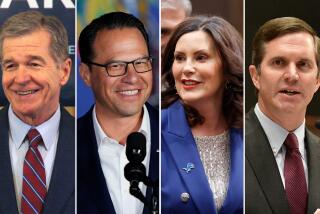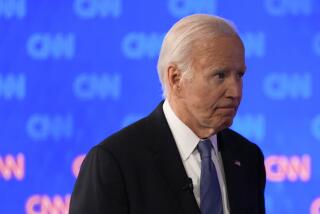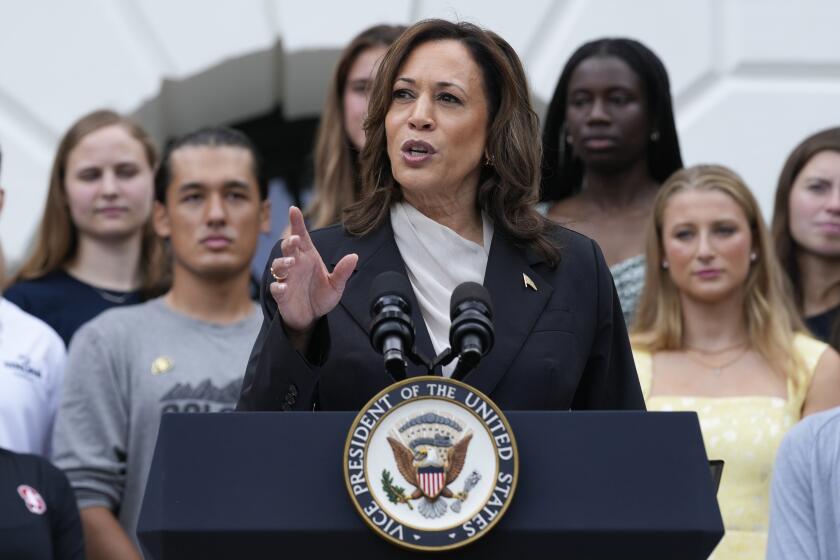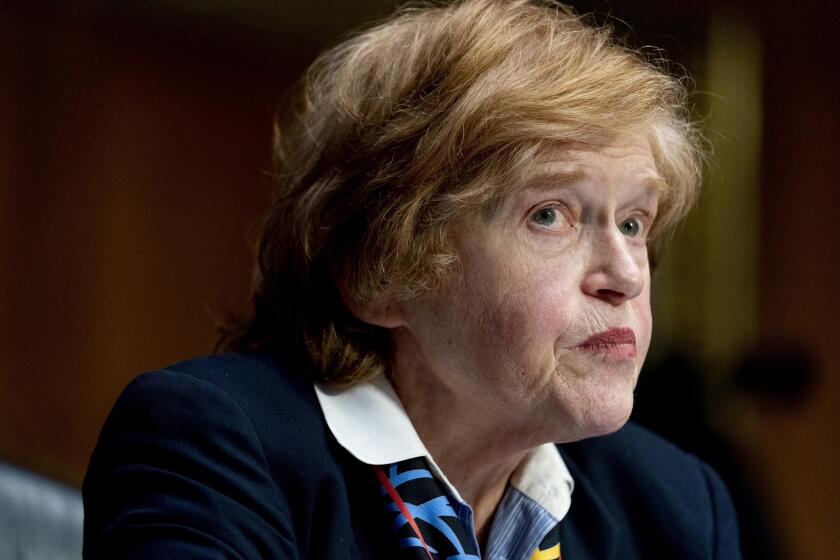A Cause Liberal L.A. Runs From
Last fall, I took my journalism class to skid row, my first visit there in a few years. I was surprised by the large number of homeless, drug and alcohol addicts and mentally ill on the streets. My students’ reaction was more to the point. They were amazed that anything like skid row could exist in the United States. Especially in a city so liberal that Democrats roll up huge majorities in partisan elections without much campaigning, and the most successful Republican, former Mayor Richard Riordan, spoke and acted like a Clinton Democrat.
A month after our visit, L.A. cops descended on skid row to chase the homeless off the sidewalks and arrest wanted felons and parole violators living in hotels and in tents. Police Chief William J. Bratton says the sweeps will continue. Indeed, he says skid row will be one of three test cases for his “broken windows” policing philosophy. Advocates for the homeless -- dubbed the “usual suspects” by reporters -- have protested the tactics. Otherwise, hardly a word of dissent from the political establishment.
Why isn’t liberal L.A. saying that law enforcement can’t solve a social problem?
Because liberal L.A. has a dual personality. It’s eager to battle for the rights of animals and trees, and to pass a City Council resolution opposing war in Iraq. But when it comes to the intractable problems of the homeless, L.A.’s liberal powers are afflicted with a severe case of compassion fatigue.
It is an attitude with a surprising history. In the 1980s, when he was one of the state’s most respected liberal politicians, Mayor Tom Bradley, with the support of the city’s liberal establishment, ordered the LAPD to sweep skid row clean of the homeless.
Bradley wasn’t heartless. One of his assistants, Wendy Greuel, now a member of the City Council, recalled a Christmas Eve trip with the mayor to feed the downtown homeless. She wrote in a tribute to her old boss that Bradley encountered a homeless young man who told him his family was living in a car. The mayor invited him to ride in Bradley’s car and said, “I’ll find you a place to stay. Let’s go pick up your family.”
Yet Bradley was more often unsympathetic, especially when it came to crowds of homeless. In 1987, the LAPD began regular sweeps of skid row to rip up homeless encampments. The city declared a state of emergency downtown, contending that the homeless were a threat to businesses and individuals. Bradley supporters among the toy wholesalers were especially enraged by homeless people sleeping on their doorsteps.
Homeless advocates blamed Police Chief Daryl F. Gates. I called the man directly in charge of the operation, Assistant Police Chief Bob Vernon. No, he said, it wasn’t Gates. Vernon had received the cleanup order directly from Bradley. His answer made sense. It fit Bradley’s view of life: He started out poor. The odds were against him. He worked his way to the top. He didn’t end up in a street camp.
Business support for the Bradley administration’s homeless sweeps also included developers and corporations then building high-rise L.A. Some of the business people were Democrats, some quite liberal. But their economic need to clear out the homeless transcended ideology. As USC professors Jennifer Wolch and Michael Dear put it in “Malign Neglect: Homelessness in an American City,” “Since the city’s founding, and despite variations in political stripe, Los Angeles’ ruling elite has been unrelentingly pro-growth.”
A chapter in the history of Los Angeles liberalism could be titled “Out of Sight, Out of Mind.”
Before and just after World War II, the great incubator of progressive political causes was east of the Los Angeles River, in Boyle Heights and City Terrace.
These neighborhoods were predominantly Jewish, but a large number of Latinos, Asians and non- Jewish Europeans also lived there. Jews and Latinos formed the successful defense committee for the young men falsely accused in the 1942 Sleepy Lagoon murder. The election of Edward R. Roybal, later a congressman, to the City Council in 1949 was another liberal triumph.
In the 1950s, Jews moved liberalism to the Westside and the San Fernando Valley and joined with African Americans and Latinos in the coalition that elected Bradley as mayor in 1973.
But city politics changed in the 1980s when these liberals, or their children, rebelled against City Hall’s pro-growth policies and started the slow-growth movement. The movement’s rhetoric had a progressive edge, notably in its attacks on big campaign contributors. But, as Wolch and Dear point out, the slow-growthers’ real agenda was parochial: keep new development out of their middle- and upper-class neighborhoods. Unable or unwilling to see the “big picture” and uneasy about the growing numbers of homeless visible on streets, alleys and parks near their homes, Westside and the San Fernando Valley liberals favored virtually any solution that would keep the homeless out of sight.
“If they don’t see it, it doesn’t exist,” said Mollie Lowrey, who runs Los Angeles Men’s Project, or LAMP, an organization that provides psychiatric care, drug rehabilitation, vocational training and housing to more than 900 people on skid row.
“Maybe because it isn’t sexy,” said Councilwoman Jan Perry, whose district includes skid row. She advocates a city redevelopment plan that would rejuvenate skid row and provide housing and psychiatric and drug rehabilitation for its inhabitants.
Bob Erlenbusch, executive director of the Los Angeles Coalition to End Hunger and Homelessness, and the Rev. Gene Boutilier, a coalition organizer, told me that the housing envisioned in the plan would be too expensive for skid row people. After talking with them, I walked through skid row with George Rivera, a recovered addict and former skid row street dweller who now works for LAMP. I didn’t see anyone with any kind of money for housing.
We walked from the LAMP center on San Julian Street up 5th Street, the worst street in the area. A park was pot smokers’ territory. Crack was being sold in front of the Los Angeles Mission, kitty-corner from the Central Division police station. Dealers offered us heroin as we headed toward Main and Spring streets. A bag sold for $9, compared with $5 in the heart of skid row, Rivera informed me. Same quality, he said.
Capt. Charlie Beck, in charge of Central Division, said his officers had intensified their arrests of drug dealers, booking more than any other division in the city. But, illustrating the complexities of its problems, skid row is now a regional drug market, a magnet for addicts from throughout the city, attracted by the availability of low-priced drugs. That, in turn, has created a new kind of skid row drug dealer: gang members from South Los Angeles and Rampart who commute to skid row for the drug trade and return home at night.
And skid row is spreading.
Now MacArthur Park, just west of downtown, is taking on many of its characteristics. In both places, the population is younger and more violent.
After our walk, Rivera and I returned to the LAMP building offices. A woman in ragged clothes, pus and blood running from a burn on her leg, was lying on the sidewalk, mumbling incoherently. Outreach workers were trying to talk to her. Rivera knew her. He suggested they take her to LAMP.
“Any society that lets its weakest live like that isn’t doing its duty,” said Beck.
But, as history shows, even in this liberal city, this particular humanitarian cause has never been considered society’s duty.
More to Read
Get the L.A. Times Politics newsletter
Deeply reported insights into legislation, politics and policy from Sacramento, Washington and beyond. In your inbox three times per week.
You may occasionally receive promotional content from the Los Angeles Times.






